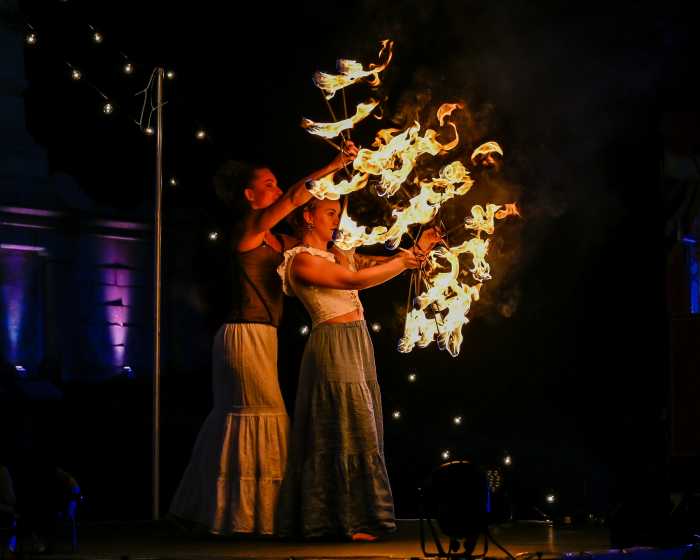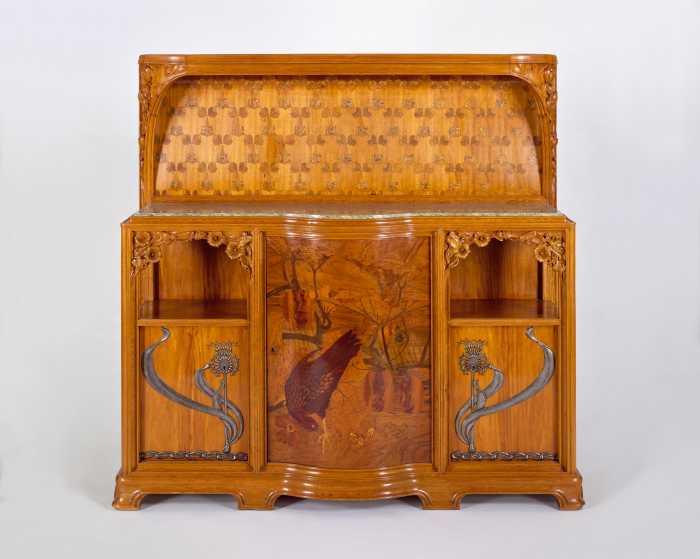The curtain could rise on the Loew’s Kings’ spectacular third act, as soon as the end of 2013.
When it does, promises David Anderson, the president and CEO of ACE Theatrical Group, the newly renovated theater — which opened in 1929, and closed in 1978, and has languished ever since — will be as elegant and comely, as finely dressed and as inviting, as it was on the day its doors first opened.
“The magic of these historic movie palaces lies in their architectural beauty and historic significance, both from a legacy standpoint and also from a community memory standpoint,” remarked Anderson.
“These theaters engender such an emotional outpouring of support, nostalgia and pride,” he added. “They are so much more than just a place to see a show. As an operator, I’d much rather bring a show to a theater like the Kings than Lincoln Center or a brand-new theater.”
From the paint colors to the curtain fabric, the theater’s now fadedglory will be restored, said Anderson, whose company recently contracted with the city’s Economic Development Corporation to take on the $70 million project.
To restore the French Renaissance-style theater as a performing arts center nearly unrivaled in New York City, ACE will utilize approximately $50 million of city money, as well as about $5 million of its own funds, and take advantage of a portfolio of tax breaks, all in the effort to bring back the aging grand dame.
In the process, the Kings — which is expected to host some 250 productions each year –— will become an economic engine that will not only celebrate itself but also bring the pulse of prosperity to Flatbush Avenue, a busy commercial thoroughfare that yet could be so much more than it now is.
“It will be nothing less than a combination of the Beacon and the Apollo in one architectural jewel of a building, as well as a catalyst for economic growth along Flatbush Avenue and all of central Brooklyn,” avowed Borough President Marty Markowitz, who announced the impending renovation of the theater during his State of the Borough Address last week.
Approximately 50 permanent jobs, and 530 construction jobs will be created by the project, according to Markowitz.
Local activists are equally excited by the renovated theater’s potential. Rickie Tulloch, who has run twice for City Council in the district that includes the Kings, recalled that he had positioned the theater’s renovation as “a centerpiece of my campaign” precisely because of its ability to jumpstart economic revitalization in the area.
“I think it becomes the hub of Flatbush,” Tulloch predicted.
While it is not intended as a traditional movie theater — with cinematic activity likely restricted to events such as premieres and movie series — the theater’s restoration will also bring back to Flatbush Avenue something that is now lacking: a place to see movies. While, once, the thoroughfare was lined with movie theaters, the recent closure of the theaters at Kings Plaza means, noted Brooklyn history aficionado Lee Rosenzweig, that there is “now not one movie theater on Flatbush Avenue from one end to the other.”
With three decades of experience in restoring old theaters and reopening them as successful cultural hubs, Anderson seems unfazed by the monumental scope of the task ahead of his company, which has guaranteed to the city that it will keep the theater in operation, without turning back to the city for additional assistance, throughout the term of its 30-year lease.
“We look for projects like this,” Anderson stressed, noting that his company seeks out grand old movie palaces in need of renovation that are located in densely populated urban areas, because that’s where the huge expenditure needed to restore them makes economic sense.
“There are a lot of old movie houses in places that don’t have the population base, but they are harder to justify,” Anderson went on.
The key to the project’s success, Andersonadded, is the ability to restore the old theater to its former glory aesthetically while, at the same time, bringing it up to contemporary construction codes and meeting requirements for modern productions that would utilize it.
As part of the renovation, experts will analyze paint colors and fabrics before any work begins. “We will be able to recreate the exact paint scheme,” Anderson averred. “The glaze and gold leaf will be put back the way it was originally designed. The same thing goes for seat fabric and carpet patterns and wooden armrests. This is what we do and what the city expects from us – to restore faithfully the historic areas, and add modern amenities such as air conditioning.”
The stage will also be significantly enlarged, Anderson said, in order “to accommodate modern traveling entertainment.”
The 3,200-seat Loew’s Kings — with details reminiscent of the palace at Versailles as well as the Paris Opera — was designed by Rapp & Rapp. It opened just a month before the stock market crash in October, 1929, that ushered in the Great Depression.
With the cost of a ticket just a dime, said Bruce Friedman, who originated the “Save the Kings” campaign a couple of decades ago, the Kings was “A place to forget your troubles,” and be beguiled by the talents of the likes of Jimmy Durante, Eddie Cantor, Bob Hope, Milton Berle and Sophie Tucker, as well as “all the great tap dancers.”
“You walked in there, and you almost felt like royalty,” added Brooklyn Borough Historian Ron Schweiger.
While the theater has become known as the Loew’s Kings, it was not built by Loew’s, Friedman said. Rather, he explained, it had been constructed by Paramount Pictures – which also built other movie palaces – and then sold to Loew’s.
This resulted in at least one anomaly inside the theater — a single plaster medallion that didn’t resemble any of the others, Friedman went on. “When Paramount sold the theater, they walked out with the molds, so Loew’s had to improvise and come up with their own design” for the decorative medallion, which is located under the box seats.
Over the years, the vacant theater has undergone various indignities, Friedman added. Among these was habitation by the homeless, who, he said, “Have been in and out of the theater for years,” in part because a missing back door made for easy access.
“That’s why so much stuff was stolen. The brass banisters, newel posts, sconces are all gone,” Friedman reported.
Nonetheless, there is much left to be discovered, he added. Not long ago, Friedman told this paper, a cardboard sign dating back to the Kings’ earliest days was discovered in the basement.
“There’s an awful lot of memorabilia shoved in corners,” Friedman added.
The Loew’s Kings is located at 1025-1035 Flatbush Ave.





















